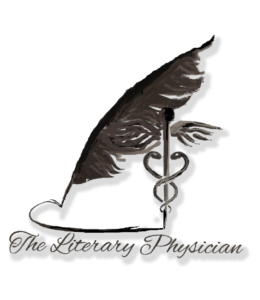An Arrow shot to the face nearly killed a future king of England
Posted on February 15, 2020 by gerald stulc
I am a retired surgeon, former flight surgeon in the USNR Medical Corps, and lifelong student of military and medical history. In considering the many misperceptions about the history of medicine, stereotypes of medicine in the Middle Ages are one of the most common I encounter. Medieval physicians and surgeons are usually represented as incompetent, highly superstitious charlatans using exotic, even ridiculous medicaments of no value, and employing barbarous surgery which usually results in the death of their patients. The truth is far more nuanced. Certainly, medicine and surgery in the Middle Ages competed with medical astrology and alchemy, and there were charlatans plying their trades to the desperate and gullible–much like the online and television medical info commercials and “experts” of today. Recall, however, that during the Middle Ages magnificent cathedrals were constructed, great literature was created by writers such as Dante and Chaucer, universities and Western music were founded, artists produced superb paintings employing perspective, gunpowder and mining technology advanced rapidly, and the overall economy was booming. Medical schools were established, beginning in the 12th century, in Italy, France, England, and Bohemia. The most famous and exemplary case of adept Medieval military surgery relates to a future English monarch severely wounded in a battle at the turn of the 15th century. In 1403, Prince Hal, the Prince of Wales and future King Henry V of Agincourt fame, led his army in support of an army with commanded by his father, Henry IV, into Wales in to suppress a rebellion of English noblemen. Feeling betrayed by the king, Henry “Hotspur” Percy led other disgruntled lords and their armies against the crown. The confrontation occurred on a sunny Saturday, the 21st of June, outside the village of Shrewsbury.
Percy took the high ground, on a ridge overlooking a long gentle slope down to a boggy field of peas and ponds. Prince Hal led the charge up the left side of the slope to outflank Percy’s right. Hal was sixteen years old at the time. In short order, the Cheshire longbows released volleys of bodkins, arrows with square steel arrowheads tapering into a sharp point. The head was socketed into the arrow shaft, and meant to penetrate chain mail, even plate armor at close range. The deadly hail brought down Prince Hal’s men, who fell “like leaves in Autumn in a Hoare frost.” Perhaps the heat, or limited vision in the charge, caused Hal to lift his visor. We’ll never know. A bodkin struck his face square on, penetrating the cheekbone just to the side of the nose and below the eye. Hal refused to be taken off the field, and continued fighting until he and his father won the battle. Ironically, Percy was killed that day allegedly by an arrow which pierced his mouth.
Prince Hal was taken fifty miles to rest at Kenilworth castle, where he was attended to by numerous surgeons. The shaft, in the interim, had been plucked out, leaving the arrowhead embedded deeply in the skull. Ointments, salves, and dressings were applied, but probes determined that the head of the bodkin was too deeply lodged to remove by standard surgical instruments designed for that purpose. It was known that failure to remove an arrowhead, contaminated with dirt and clothing, would result in fatal infection.
After several days, John Bradmore, one of the royal court surgeons in London, was sent for. Bradmore immediately set to dilate the wound tract, swollen shut from inflammation and incipient healing. Using fine linen wrapped around thin sticks of elm wood, these probes were dipped in honey and introduced daily into the depths of the wound, gradually increasing the size of the probes until the wound was sufficiently widened. In the meantime, Bradmore designed a long narrow pair of smooth tongs with a screw passing down between them. As the screw was advanced between the tongs, their smooth ends separated–a sort of corkscrew. Now, Bradmore threaded the tong device gently down the tract of the wound until the ends of the tongs entered the socket of the bodkin. As the screw was carefully advanced, the tong ends separated until they were compressed against the inside of the socket. With gradual rocking and pulling, the bodkin came out intact. The wound was further irrigated with honey, an ancient medicine known to suppress infection and promote healing, and with white wine, another antiseptic. Report this ad
Prince Hal, being young, strong, and sustaining an incredibly lucky shot that missed all major nerves, blood vessels, and the brain, recovered rapidly. Subsequent portraits of him show him in profile, from the left side, concealing the vivid scar in his right cheek. In 1413, he became king, and defeated the French in the Hundred Years’ War Battle of Agincourt two years later. Bradmore continued surgical practice with a princely annual pension for his success, dying a wealthy man. He wrote an account of Prince Hal’s wounding and treatment, “Phiomena,” a case study of military surgery in the Middle Ages. Certainly, not all surgeons in that time were as talented or innovative as Bradmore. The case became well known because of the importance of the patient, and the success of the operation. However, there must have been many more men like Bradmore who performed successful surgeries through experience, empiricism, and common sense, men like Mondeville, John of Arderne, de Chauliac who studied ancient medical works and wrote the surgical texts that guided surgeons into the era of the Renaissance. May the civilizations hundreds of years from now not judge us as harshly for our ignorance of cancer, mental illness, autism, Alzheimer’s and addiction.
